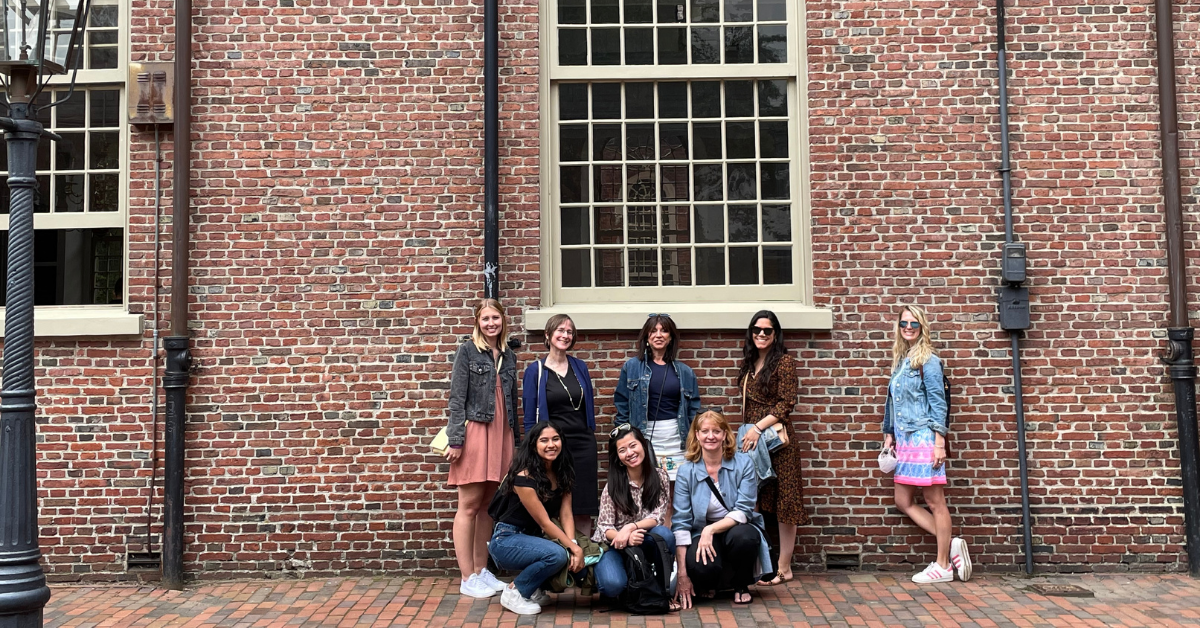At Teak, we love a good field trip. Now that cultural institutions are starting to re-open their doors to visitors, we were lucky to gather for our first team outing in more than a year at Old North Church, an icon in American history that we are honored to support with public relations. The Teak team got a behind-the-scenes look at the church, best known for its steeple that houses the lanterns that helped spark the American Revolution. And my favorite part? Touring the crypt, which was less creepy and more captivating than I imagined.
At every turn on the tour, I was reminded of an important lesson in storytelling and communications: To do the work well, we must get close to the story. Putting on our journalist’s hat and seeing things for ourselves helps us write better press releases and pitches, because we better understand the people and issues we are representing. For example, crouching down to enter the basement-level crypt, and smelling its musty scent sparked questions about who was buried there and why, how the historic crypt is connected to modern-day America, and why 1800s-era coffins were so narrow compared to today’s versions (answer: people were smaller!). Walking past the wooden pew boxes, one decorated with ornate silk upholstery, raised questions about who could be a member of the church, who was left out, and how the Church has evolved over its nearly 300-year history.
Getting close to the story is a model that we try to implement for our clients, because it helps us really look under the hood and understand what makes a story unique, interesting, and ultimately, why it matters. For one client it might be visiting a church basement, and for another it is touring a credit union’s newest location to see their interactive humanoid robot and hologram that can communicate with visitors in multiple languages. For another, it is interacting with the majestic sea animals an organization is working to protect.
I’ll always remember visiting the site of a learning pod in Roxbury, Massachusetts and seeing young people engaging with teachers who looked like them, in a space that was filled with sunlight and children’s artwork. That same day, I got to sit with one of the leaders responsible for creating the learning pods and hear firsthand from her about her deep commitment to driving equity in education. Seeing her connect with a Kindergarten-age girl who proudly and happily counted to 10 for her solidified the answer to the question “why does this work matter?”
These site visits, which can include one-on-one interviews, shadowing clients for a typical day in their lives, meeting the people an organization works alongside and serves, touring their facilities, attending their events, and seeing where their work happens are all great ways to get close to the story.
Getting approximate, as one of my mentors used to say, is one of the best ways to put yourself in your reader’s shoes. Experiencing the work of our clients makes our work at Teak that much more rewarding.


